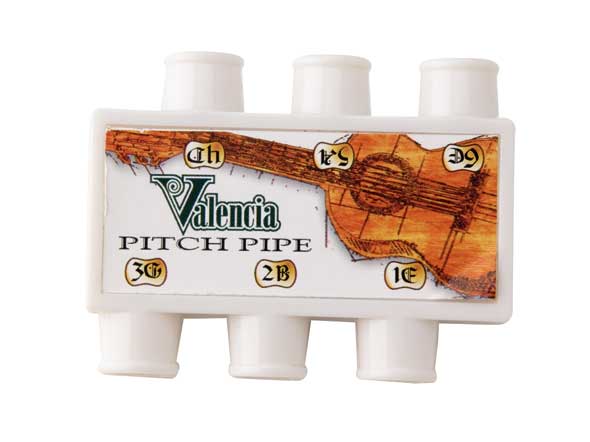
Appendix One - Tuning
It is essential for your guitar to be in tune# so that the notes you play will sound correct. The main problem with tuning for most students is that the ear is not able to determine slight differences in pitch. For this reason you should seek the aid of a teacher or an experienced guitarist.
Several methods can be used to tune the guitar. These include:
- Tuning to another musical instrument (e.g. a piano, or another guitar).
- Tuning to pitch pipes or a tuning fork.
- Tuning with an electronic tuner.
- Tuning the guitar to itself
The most common and useful of these is the latter; tuning the guitar to itself. This method involves finding notes of the same pitch on different strings. The notation and diagram on the opposite page outline the notes used:
Tuning the guitar to itself requires a reference note from another source. Without this, your guitar may be in tune with itself, but higher or lower than the actual pitches on standard music notation. Start by tuning the open 6th string to either:
- The open 6th string of another guitar.
- A piano. You can also tune the other strings to the notes indicated on the keyboard below.
The piano note equivalent of the open 6th string is indicated on the diagram.


Pitch pipes which produce notes that correspond with each of the 6 open strings.

A tuning fork. Most tuning forks give the note A.
To produce sound from the tuning fork, hold it by the stem and tap one of the prongs against something hard. This will set up a vibration, which can be heard clearly when the bass of the stem is then placed on a solid surface, e.g. a guitar body.
Tuning the Guitar Using Notation and Tab

Unless you are using an electronic tuner# to be able to tune the guitar accurately usually requires many months of practice. You will probably need your music teacher or musician friend to help you tune when you are learning.
If you do not have another instrument to tune to, you can tune the guitar to itself by using the following method.
- Place a left finger on the 6th string (thickest string) at the fifth fretr and play the string.
- Play the open 5th string (an A note). If this note sounds the same as the note you played on the 6th string at the fifth fret, the A string is in tune.
- If the open A string sounds higher, it means that it is sharp. Turn the tuning key slowly in a clockwise direction. This will lower the pitch of the string. Play the two strings again and compare the notes. Keep doing this until the open A string sounds the same as the E string at the fifth fret.
- If the open A string sounds lower, it means that it is flat. Turn the tuning key slowly in a counter-clockwise direction. This will raise the pitch of the string. Play the two strings again and compare the notes. Keep doing this until the open A string sounds the same as the E string at the fifth fret.
- Tune the open 4th string (a D note), to the note on the fifth fret of the 5th string, using the method outlined above.
- Tune all the other strings in the same way, except for the open 2nd string (a B note), which is tuned to the note produced on the fourth fret of the 3rd string (see diagram).
Electronic Tuners

Electronic Tuners make tuning your guitar very easy. They indicate the exact pitch of each string. It is still recommended however, that you practice tuning your guitar by the above method to help improve your musicianship.